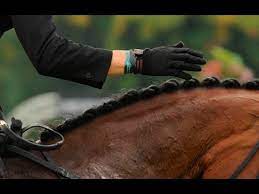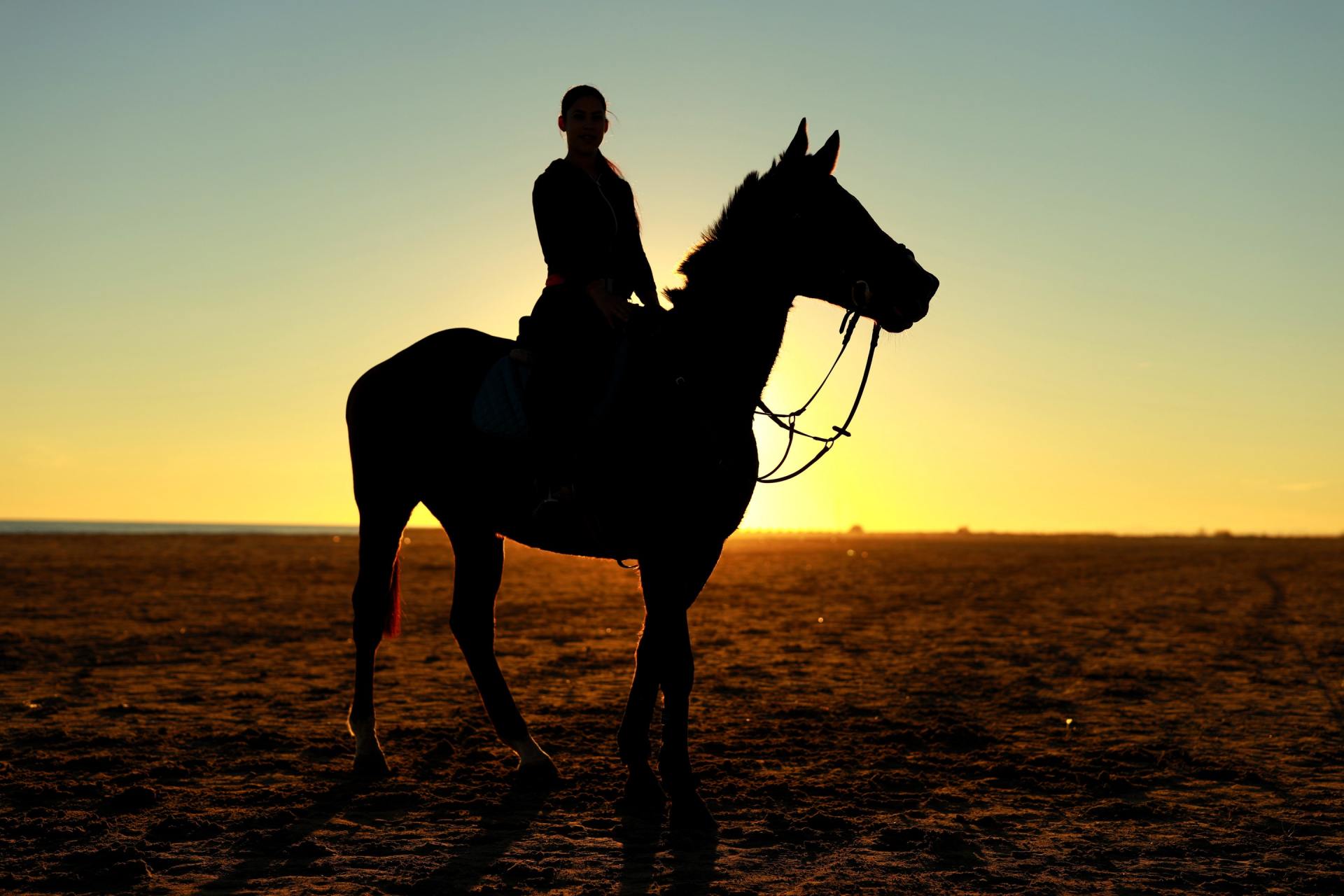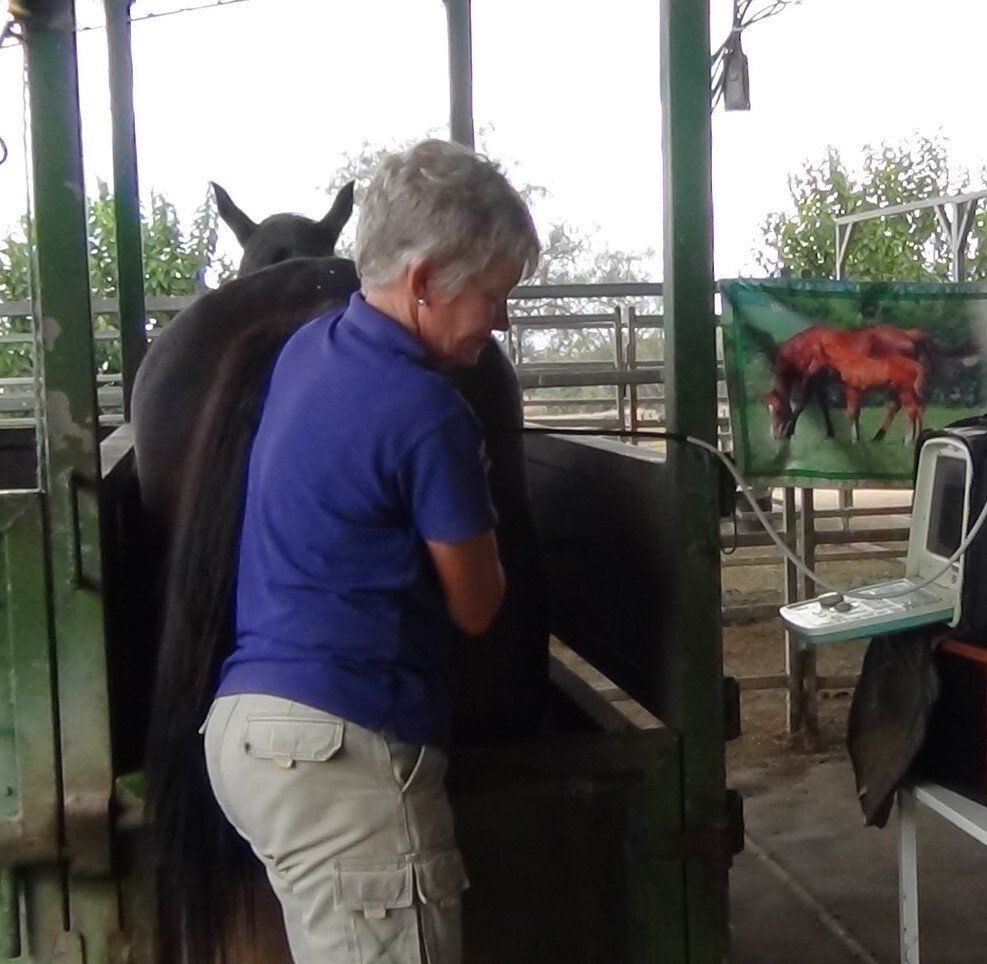Horse talk Articles
To Pat or to Stroke your horse as reward / comfort

Recent study results lead researchers to believe it's better to scratch a horse in reward, rather than to pat.
To pat, or not to pat. That is the question we horse people have been asking ourselves, and it’s also one that a group of British equitation scientists recently aimed to resolve.
And their study's results lead them to believe that it seems better to scratch, not pat, to reward a horse, said Emily Hancock, MSc, under the supervision of Sarah Redgate, PhD, both of Nottingham Trent University in Nottingham, the United Kingdom. Hancock presented the research at the 2014 International Society for Equitation Science conference, held Aug. 6-9 in Bredsten, Denmark.
“Wither scratching could potentially increase horse/human bonding and act as a more effective reward,” Hancock said, adding that scratching is a natural behavior among horses, whereas patting is not. “Riders and handlers should be encouraged to scratch rather than pat their horses as a reward.”
The issue of patting versus scratching had not previously been addressed in scientific studies, she said. In her study Hancock and her fellow researchers observed 16 horse/rider combinations in the Grand Prix Special dressage test of the 2012 Olympic Games in London. Overall, pats dominated any other type of non-aid contact: Riders issued 350 pats throughout the Grand Prix competition and only three strokes.
Of the 16 riders, 15 patted their horses when they finished the test, and 12 of these patted for at least a full minute. As a result, 34% of the horses displayed visible behavioral reactions, mainly speeding up their movements when they received the pats, Hancock said. However, it’s possible that this acceleration was the result of the rider moving forward in the seat, she conceded.
The research group then investigated the effects of patting and wither-scratching in five riding school horses as well as five rescue horses that had never been victims of abuse or adverse handling. The riding horses were accustomed to being handled, patted, scratched, and brushed, but the rescue horses were not.
In the study handlers patted each horse for 30 seconds four times, with 15-second breaks between each patting session. They also scratched the horses on the withers four times for the same intervals. As a control, handlers just stood quietly next to the horses for the same amount of time. The team recorded heart rate and behavior for all three parts of the experiment.
The researchers found that horses moved their ears around more when they were patted. When they were scratched on the withers, they tended to put their heads down, Hancock said. Even more remarkable, she said, was the fact that wither-scratching seemed to prompt behaviors that weren’t seen at all in patting or during the control phase.
“We noted a lot of mutual grooming and especially upper lip movement during the scratching phases, but there was just none of this at all when the horses were being patted,” Hancock said.
Interestingly, the riding school horses showed more positive behaviors than the rescue horses did, perhaps because of their isolated housing situations, Hancock said. “Obviously when these horses are individually housed, they can’t participate in this mutual grooming,” she said. “I think they appreciated it more.”
Patting, by contrast, resulted in “much more movement, more head-shaking, more moving back and forwards, slightly more raised heads, and more pawing,” Hancock said. “But we saw no pawing at all during scratching.”
A 4-year-old rescue horse, the youngest in the study, had the most extreme reaction to patting, raising his head high and taking seven steps back, she said.
Heart rate, though, did not vary significantly between the groups. Although previous research on wither-scratching alone (not compared to patting) has consistently revealed lowered heart rates during the scratching, Hancock’s study did not show this, she said. “But their behavior still made it clear that they enjoyed the scratching,” she said.
Article by Christa Lesté-Lasserre, MA
Christa Lesté-Lasserre is a freelance writer based in France. A native of Dallas, Texas, Lesté-Lasserre grew up riding Quarter Horses, Appaloosas, and Shetland Ponies. She holds a master’s degree in English, specializing in creative writing, from the University of Mississippi in Oxford and earned a bachelor's in journalism and creative writing with a minor in sciences from Baylor University in Waco, Texas. She currently keeps her two Trakehners at home near Paris.
The body content of your post goes here. To edit this text, click on it and delete this default text and start typing your own or paste your own from a different source.
Other Articles



